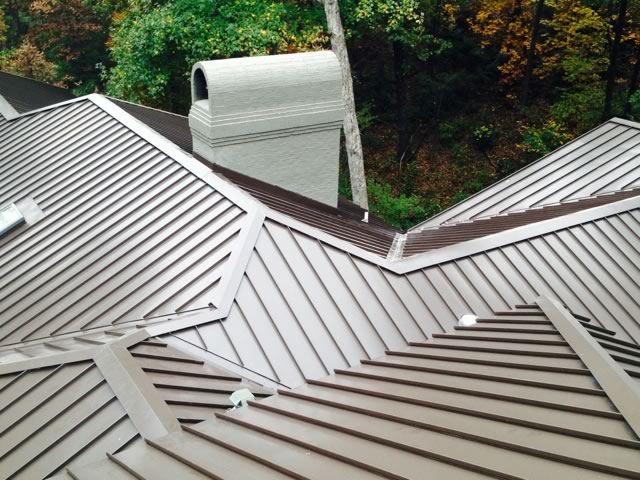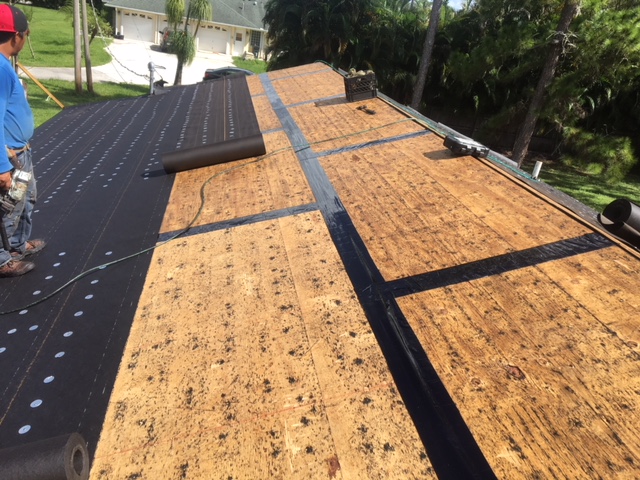How to Control a Leaking Roof

Make an effort situating the leakage from inside
1. Perhaps one of the most obvious start is to try looking for a roofing leak directly over the leakage in an exterior wall or ceiling. Obtain a flashlight or ample illumination. Check the attic room floor while it’s drizzling over the leakage. Attempt to identify any water buildup, mold and mildew, water spots or wet insulation.
2. Study the roof’s bottom for locations of moisture or mold and mildew near locations of infiltration like pipes vents, chimneys, or where different aircrafts of the roofing system intersect such as valleys, and also dormers. These examples represent holes in the blinking or negative installation.
3. A leak far from these locations generally indicates difficulties in the roofing product. Constantly keep in mind that water can travel laterally prior to passing through a joint in the roofing system sheathing, and can take a trip in a horizontal joint before falling to the ceiling or floor.
4. It’s typically very handy to videotape dimensions from inside that you can utilize to situate points of reference from the exterior. Take a measurement down from a ridge as well as horizontally from the facility of a sidewall or valley. Or measure ranges from other factors of infiltration or chimneys.
5. For roof rafters that are affixed to the ceiling is take measurements that can assist you find a leakage on the surface and also attempt to regulate them inside.

Handling the Damages
1. Water is well capable to travel on the bottom of sheathing and down roofing system rafters prior to going down into several locations. Water management can be made simply by placing a string right into the stream of water and also directing the string to a bucket. Water will typically tend to run along the string right into the pail.
2. You can also drill an opening into your ceiling to allow the water to go through it. This strategy will certainly keep the water from infecting various other locations causing even more damages. It does not enable the ceiling to become more saturated. It will reduce the opportunity of your ceiling collapsing and also will certainly enable you to utilize the string to bucket method to accumulate the water. Check out Revive Restoration to learn more about roofing.
Situate the Leak Outside
1. Making use of a few of the dimensions you obtained from within, extent out your monitorings using a ladder and/or a set of field glasses to make it less complicated on you. Refrain from walking on roofs that are wet, or during rainfall. Particularly wood roof coverings as they will certainly be incredibly slick.
2. Try to find leaves and also other debris that could be blocking water circulation. It can take place in valleys beside, above any roofing system infiltration, or dormers. If snow is on the roofing system, a feasible ice dam can have developed at the reduced edge of the roof covering causing water to support under overlapping layers of roof product. Eliminate any type of debris or obstruction if you can securely reach it.
3. If you’re able to obtain close sufficient, examine metal flashings for deterioration or joints that link to a smokeshaft or various other roofing infiltration. You can spot these metal flashing momentarily. Changing them is the only irreversible option to it though. Generally with dried out rubber gaskets on the pipes vents you can easily change them.
4. Pay very close attention to any locations covered with the black flashing cement. That suggests formerly repaired leakages. Try finding any pinholes or cracks that commonly happen as the product ages. You can make temporary repair work to them with some flashing concrete utilizing a drywall or putty knife.
5. When and if you’re able to try checking attachments like antennas, a dish antenna, or anything else that may have been nailed, or screwed into the roof. A small blinking that remains in good condition should constantly cover each fastener. Ideally, the best point to do is not secure anything onto your roof in the first place.
6. If you identified while inside that your leak was mid-roof not relating to any kind of flashing, search for shingles that are missing or harmed. On timber roofs, look for any type of roof shingles or drinks that are badly distorted, cupped designed, or split. Search for any type of joints in one program that drop less than 1 1/2 inches to the ideal or left side of a joint in the training course below. Flat or almost flat roof coverings generally need extremely close inspection to discover any type of wearing away, worn, or damaged locations.

